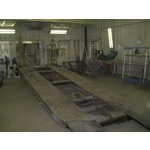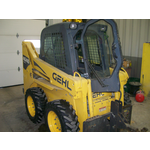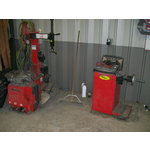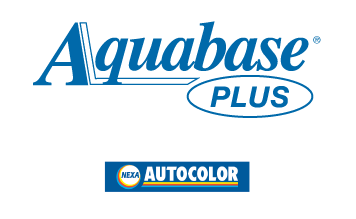
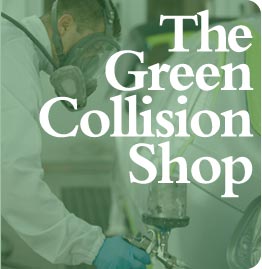
"Specializing in YOUR vehicle"

Using PPG's waterborne paint helps improve the environment.
 Going green with PPG's waterborne automotive paint systems is easy—and you won't sacrifice your shop's performance or quality.
Going green with PPG's waterborne automotive paint systems is easy—and you won't sacrifice your shop's performance or quality.
Using waterborne automotive paint is good for employees, too.
Since waterborne contains lower VOC than solvent, it is easier to control the air quality inside a shop or spray facility. While standard safety equipment is still required, you can virtually eliminate the harsh odors associated with using solventborne paint throughout your facility.
Environmental Benefits
- Reduces production of volatile organic compounds (VOC)
- Improves air quality
- Promotes health and safety of employees
- Achieves performance and quality
PPG's History of Waterborne Research and Development
No other company has more expertise in advancing waterborne automotive coatings technology than PPG.
Long before most of North America's body shops had even given though to waterborne finishes, PPG was already immersed in it. That's because PPG saw the environmental handwriting on the wall even before it was written andfor the past two decades has been developing and refining its technological expertise in both North America and Europe. Having worked closely with OEMs in their transition to waterborne at vehicle assembly plants, PPG scientists understood early on that the refinish industry would have to move away from solvent-based paints.
 |
1986
PPG introduces waterborne paint technology for use in OEM assembly plants.
1989
Nexa (ICI) Autocolor first to launch waterborne products.
1990
Aquabase receives Queens Award for Technology in United Kingdom for OEM finishes.
1992
World's first commercialized refinish waterborne basecoat is introduced by Nexa (ICI) Autocolor, featuring innovative anti-settling technology.
1994
Aquabase technology wins UK's national Automotive Trade Award for Best New Product.
1995
Aquabase receives Queens Award for Technology for Refinish.
1998
Aquabase introduces first complaint offering for repair of tricoat pearlescent finishes.
1999
PPG launches MaxMeyer AquaMax and PPG Envirobase systems in Europe.
PPG purchases ICI Autocolor specialty coatings business.
2001
Envirobase refinish basecoat system is introduced for North American body shops.
2002
PPG Envirobase technology wins UK's Institute of Transport Management Excellence Award as best innovation.
2005
Body shops across Europe make transition to Aquabase Plus and Envirobase High Performance.
2006
Nexa Autocolor introduces Aquabase Plus into North American market.
2007
Envirobase High Performance introduced into North American market.
PPG launches color variant tools with chips sprayed in waterborne.
Engine Bay Repair System is introduced.
2008
Introduced first waterborne single-stage Engine Repair System
2009
Introduced waterborne-compatible high solids clearcoats with One-Visit application technology.
2010
Launched single-stage Interior Repair System.
They took the steps to address the environmental issues solvent-based paints raised by developing a water-based paint system that produced remarkable results—that turned the heads of the OEMs.
PPG expanded its global research capabilities with the acquisitions of ICI Autocolor and MaxMeyer in the 1990s, solidly establishing itself as the world's waterborne paint leader. That role was reinforced when, in 1992, ICI Autocolor (now Nexa Autocolor) introduced the world's first waterborne refinish system, an innovation that received the United Kingdom's Queens Award for Technology in 1995.
Listening carefully to customer feedback and taking advantage of its expanded global research capabilities, PPG continued to add innovations to its waterborne offerings throughout the 1990s and into the 21st century. For example, in 1998 it was the first to make available a compliant system capable of repairing 3-stage pearl finishes. And in 1999, PPG placed its first brand offering, Envirobase®—a product of its best European and North American waterborne technologies—into body shops. Ferrari was so impressed that it chose Envirobase as its original equipment finish.
The OEM's introduction of new metallic and effects finishes was the driving catalyst for PPG's development in 2005 of new high-opacity toners offering the latest pigments—a significant advancement in waterborne color-match capabilities. These advancements were good reasons why PPG's Aquabase® Plus and Envirobase® High Performance systems became readily accepted for use by more than 17,000 shops across Europe seeking to comply with the European Union's stricter refinish regulations.
The latest innovation for PPG waterborne products is the Engine Bay and Interior Repair Systems, which significantly speed up the repair process when making these types of repairs.
Today in North America, more and more collision shops are making the transition to waterborne. In fact, more than 4,000 collision shops have made the transition to PPG's Envirobase High Performance and Aquabase Plus waterborne systems. Many of these shops have done so in light of new air quality regulations in California and Canada, and pending regulations in states governed by the ORC, predicted to take effect in January, 2012. The environment, however, is only one reason. A great many progressive shops have made the switch to "stay ahead of the game," knowing that PPG waterborne technology represents a major advancement over their solvent-borne system.

All About Waterborne
Rely on PPG's experience with waterborne coatings to lead the way.
The move to waterborne refinish basecoat is an effective solution for lowering VOC emissions—improving air quality and OUR environment. The transition can be seamless and productive when the right choices are made concerning technology, equipment, and preparation.
Copyright 2010 www.abwebsitesolutions.com

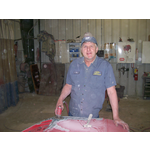
![000_0006 [2].JPG](https://w.mawebcenters.com/Steinkeauto/_imagecache/P=W150,H150,F,OJPG/000_0006 [2].png)

![000_0013 [1].JPG](https://w.mawebcenters.com/Steinkeauto/_imagecache/P=W150,H150,F,OJPG/000_0013 [1].png)

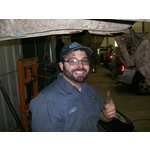
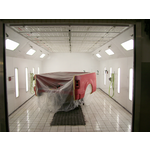
![000_0004 [4].JPG](https://w.mawebcenters.com/Steinkeauto/_imagecache/P=W150,H150,F,OJPG/000_0004 [4].png)
![000_0015 [1].JPG](https://w.mawebcenters.com/Steinkeauto/_imagecache/P=W150,H150,F,OJPG/000_0015 [1].png)
![000_0005 [2].JPG](https://w.mawebcenters.com/Steinkeauto/_imagecache/P=W150,H150,F,OJPG/000_0005 [2].png)

